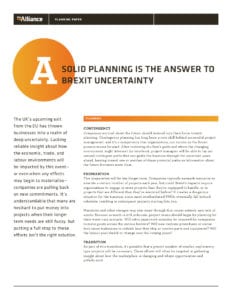
The Impacts of Testing & QC on Manufacturing Projects
Testing and QC programs are a useful and necessary part of the manufacturing sector, but PMs need to be ready to address the significant impacts these activities can have on projects that are already in progress. Once the results of a testing or QC program are released, the effects on the project can range from delays in downstream activities to changes in the project’s scope. Successfully executing tasks in spite of these impacts—sticking to the target completion date and approved budget—can be tricky. But while juggling mid-project changes is often challenging, there are strategies organizations can use to ensure that testing and QC efforts don’t put the project’s success in jeopardy.













